Sometimes paying for something is better than getting it for free.
Take digital marketing.
You could spend a lot of time building a blog or a social media group that gets a lot of traffic and then try to get income out of it.
Or you could just pay a fraction of a dollar for each click and be done with it in seconds.
PPC struggles
That is what PPC (pay-per-click) marketing essentially is: a way to drive traffic towards your monetization in exchange for money.
Nothing new so far. Everyone in the industry has tried PPC marketing at some point.
Tried, lost some money or got insignificant results, and forgot about it. This is how jumping into the PPC adventure without any plan or preparation looks like for many advertisers.
But you are not one of those people. You came to this blog to read about the best PPC strategies that will put your campaigns into hyperdrive.
Before we cover that, let’s go over some popular PPC digital marketing programs that you may have missed.
Best PPC Affiliate Programs
There are many big and small digital marketing programs to choose from. You probably already know some of them.
Google Ads
Google Ads (formerly known as Google AdWords) basically IS PPC marketing, to the point that most articles on the subject don’t even mention other programs.
Google Ads actually consists of three networks.
- Search. You can use the popularity of their search engine to show your ads and pay only when someone clicks it.
- Display. Reach up to 80% of internet users by showing your ads on Google partners’ websites.
- Video. Advertise on YouTube, world’s most popular video platform.
Want to know more? Read the first part of our Google Ads tutorial to learn more.
Facebook Ads
In PPC marketing, most ads try to blend in with their surroundings. It’s no different on Facebook.
Between your friends’ angry posts and group updates there are ads that utilize various content types and layouts to fill the infinite scroll.
Interested? Have a look at our comprehensive guide to Facebook ad campaign.
Microsoft Ads
Never heard about Microsoft Ads? Bing it. Oh, so you use Google and don’t care about other search engines? You are missing out over a half a billion on unique visitors per month.
Google Ads is obviously bigger.
But half of a billion is still a huge number.
Many people, especially in the US, use Bing as the default search option. Treat Microsoft Ads, which uses Bing search result pages to display its ads, as a yet-untapped source of good PPC traffic.
Outbrain and Taboola
These two famous native ads PPC platforms are a real alternative to Google behemoth.
You’ve probably seen ads they serve without realizing it. They are prevalent on news portals and other premium publishers that put emphasis on seamless ad experience.
Revcontent
Revcontent is a content-discovery platform.
It allows advertisers to promote their content using a PPC cost model. With an estimated 97% US households in reach, Revcontent is a serious player in the PPC world.
More PPC affiliate programs
The list above can be easily extended. There are many different platforms on the market.
Can I Just Simply Run a PPC Campaign?
You very much can. You can also donate your money to charity or set them on fire in a nice orange blaze. Most likely you will see the same return on investment.
Jokes aside, many of the PPC programs mentioned above offer some sorts of automated, smart or AI powered ways that aid you with running your campaigns. But if that was so easy, everybody, and I mean everybody, would be running their own campaigns. Automatic options are not good enough to get you ahead of everybody else on your own.
Maybe some time ago, when we used to be subject to a much smaller number of ads. But not now.
Hence come PPC marketing strategies.
Some of them should be put to motion before you start your campaign, some during the campaign creation process, and the rest after you have launched your campaign.
I. PPC Strategies for “before the campaign”
Ok, so you have decided to go into PPC marketing for real. No excuses, no “at least I’ve tried” explanations, no accepted losses.
Win or die.
We are aiming for the “win” part.
Product and keyword research
If you are the owner of your product, you probably know it very well. Yet the way your potential buyers see your product may still surprise you.
This is even more true if you promote someone else’s product. Discovering what qualities of this product makes your audience tick or what problems your product may solve is the first step in planning your marketing campaign.
Product research will automatically lead to keyword research.
Good keywords prequalify the audience, so you won’t display your ad to random people.
The qualities of a good keyword are as follows:
- It has a high search volume. Depending on the industry and GEO, the number varies, but I would touch any keyword with at least 1,000 searches per month.
- It has low competition. This is difficult to achieve as high volume and high competition usually come in pairs.
- It is specific and drives revenue. You are not aiming for the most traffic but for the most profit. Keywords that bring you high but unrelated traffic are not worth it. If you advertise a paid video-on-demand service, don’t go with the “free video” keyword, no matter how popular it is (it is very popular).
- It is short. This one’s easy: no one searches for “I want to get to Maui paying as little as possible”.
All of this is “keyword 101” but I wanted to make sure we are on the same page. Here are some more advanced tricks that may help you with your keyword research:
- Try low volume keywords. Google, for example, may suggest a better and more popular variation of this keyword.
- Start with modified broad match keywords and then switch to phrase or exact match after you launch your campaign and see what works.
- Create a list of negative keywords in order not to pay for something that simply cannot work.
Competition research
In most cases, you won’t be a sole advertiser working without any competition, carving a path in the new market. You will follow the path that was already followed by many. Your goal will be to simply follow it faster.
To do that, you should get familiar with everything your competition has been doing before: know their content, creatives and angles.
Reverse engineer their approach and learn from their weak points and strong points. Use SEMrush to learn from your competitors.
Don’t trust your judgment; ask your friends and family about their opinion on your competitions’ approach and your own.
Set milestones
Having a plan will allow you to estimate your progress. Write down what numbers of visits or what profit you expect to have in a given period of time. Estimate your advertising budget per day and month.
It will serve as your reference point and the basis for evaluation of your strategy.
Not something you will use to beat yourself up.
New channels
Consider using alternative marketing channels. The advertising giants described in the list of PPC programs at the beginning of this article should only serve as an incentive.
That are other less likely ways to get to your visitors, such as:
-
- Quora
- Yahoo Gemini (now Verizon Media Native)
Check our lists of the best affiliate marketing programs or the best traffic sources for further inspiration.
Most platforms that serve as a meeting place for people have some kind of PPC program attached to it.
II. PPC Strategies for the campaign creation
Once you have all the pieces of the puzzle, it’s time to put them all together. While doing so, there are still a lot of things that you should consider.
Campaign structure
Many big platforms allow you to create complex campaigns with ads that are structured in ad groups and multiple ad groups gathered under a campaign. This is not purely for organizational purposes but to manage your campaigns more efficiently. Each campaign level defines different information types:
- Campaign level defines the goal and budget
- Ad groups define keywords and targeting
- Ads define creatives and links.
To learn more about how the campaign structure works in Google Ads, read the second part of our Google Ads tutorial.
The campaign structure should be well thought-out. Follow the points below:
- Ads in each ad group should be similarly themed.
- Create separate campaigns for each country
Inverted Unicorn Strategy
Target the overlap of two seemingly unrelated audiences. If you advertize to the large audience (for example “Android fans”), it will be very difficult to appeal to such a big and diverse group. Find another seemingly unrelated quality, and appeal to this quality in your message.
Facebook allows you to target your audience based on various interest options. For example, this second quality could be:
- Sport enthusiasts
- Gamers
- Star Wars fans
Throw in an inside joke, or use a creative that resonates with the second quality while still talking to Android fans.
“This new Android camera app shoots faster than Han Solo before the special edition.”
Many people won’t get it.
Those who will, will be intrigued.
The overlap of Android fans and Star Wars fans is still a large group of people. And your message will resonate with them more.
Ad extensions
Treat every element of your ad as an additional possibility to advertise.
For example, your domain name should contain keywords or your brand.
The huge yet often ignored option are ad extensions. They display additional ad information, such as store address, phone number or additional site links.
Mind that ad extensions will not always be displayed. They will be shown only if Google decides that it will boost ad relevance. The good news is that they cost nothing.
Write Convincing Ad Copy
It’s easy to say to write copy for ads that will resonate with an audience.
“Just run an awesome campaign, this way you will be successful.” Geez, never crossed my mind.
Thanks to all Captains Very Obvious.
Yet you should remember that beneath all clockworks and setup options you are talking to people made of flesh and bones. Good ad copy can save even poorly targeted campaigns and vice versa.
I most cases, it’s best to follow these simple rules:
- If you advertise a concrete product, don’t advertise it directly, advertise benefits from using your product.
- Instead of “The best flashlight 2020”
- Try “Illuminate your path and everyone else’s with this 20,000 lm flashlight”
- If you advertise a group of products (for example, “hiking boots”), write that you are an expert in outdoor fashion retail and you have a wide selection of products.
- Instead of “Hiking boots store”
- Try “We have all sizes from all manufacturers”.
You don’t have to be very clever with your words, you are not trying to write the next great American novel. Simply remember that you are writing to persuade people, not to please bots.
III. PPC Strategies for “after the launch”
Your work does not end with the launch of your campaign. In fact, you now enter the crucial phase. Things you do now will decide the success of your campaign.
Remarket Your Audience
Remarketing is among the most important PPC strategies. It’s the most obvious secret weapon, the most powerful trick in any marketer’s sleeve.
Remarketing is an equivalent of Watt’s steam engine that sparked the industrial revolution not because it was first but because it was fuel-efficient.
Start the revolution in the way you run your campaigns by using assets in a smart way, not by simply burning cash.
Your audience that has previously engaged with your ads is your asset.
They’ve shown interest. They were close to converting.
They just need a little nudge.
Fuel your advertising machine with your ad money and market your previously engaged audience again with an adjusted message.
Google Ads Remarketing
In Google, remarketing requires creating a new campaign with an audience that have interacted with your business.
Facebook Remarketing
In Facebook, you use data gathered by the Facebook pixel to create a custom audience.
It’s that simple.
Sir James Watt would be proud of you.
Automate Your Campaigns
Although we have mentioned at the beginning of this article that you shouldn’t rely solely on any “smart” or “AI powered” options for running your campaigns, you should automate as many tasks as possible to save time.
Google Ads
Google Ads have rules that can control your campaigns, schedule ads or adjust bidding. The rule launches when set conditions are met.
Think about what actions in your Google Ads account you perform most often. Think about how good it would be to let the machine do them for you.
Time is money. Or relax, depending on priorities. Time is something nice to have.
The Best PPC Strategies Are Not the Fanciest But Most Profitable
You shouldn’t treat everything that was written above as a checklist that needs to be followed. The goal is to run a successful campaign, not to use every strategy in the book.
Pick those PPC strategies that suit your case the most.
Try different approaches.
Test and learn.
And while at it, grab the best PPC tracking software that will help you succeed in the PPC world.
No banner with provided ID found

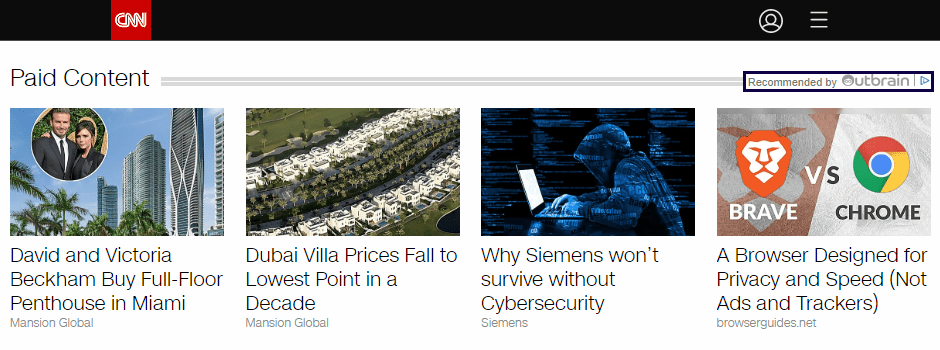




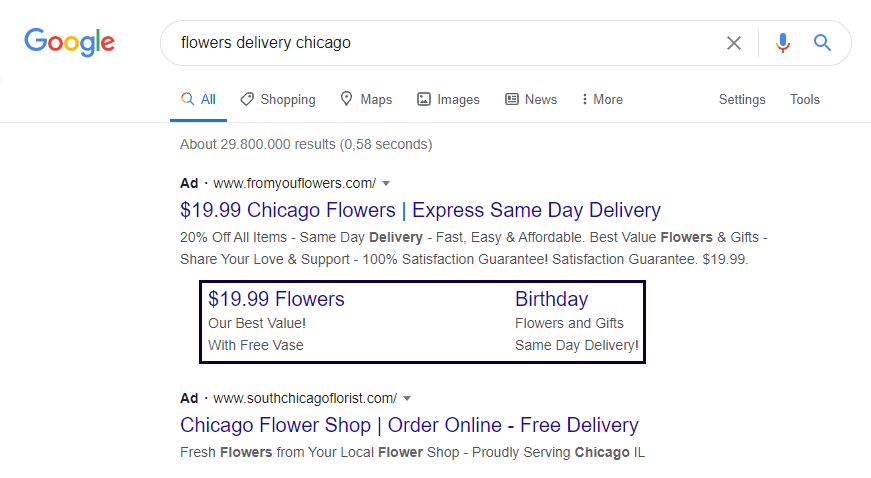
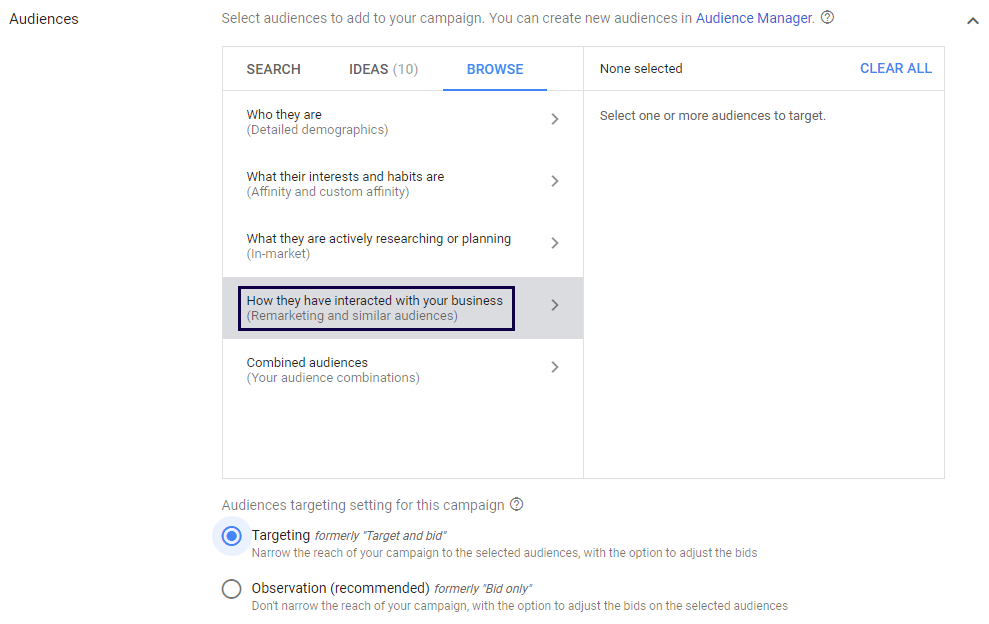
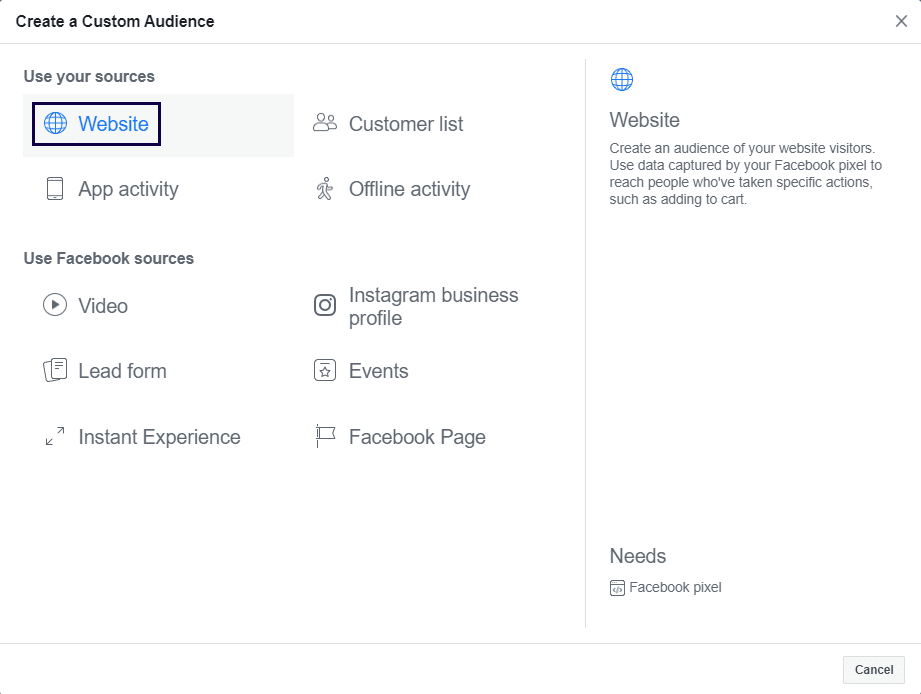
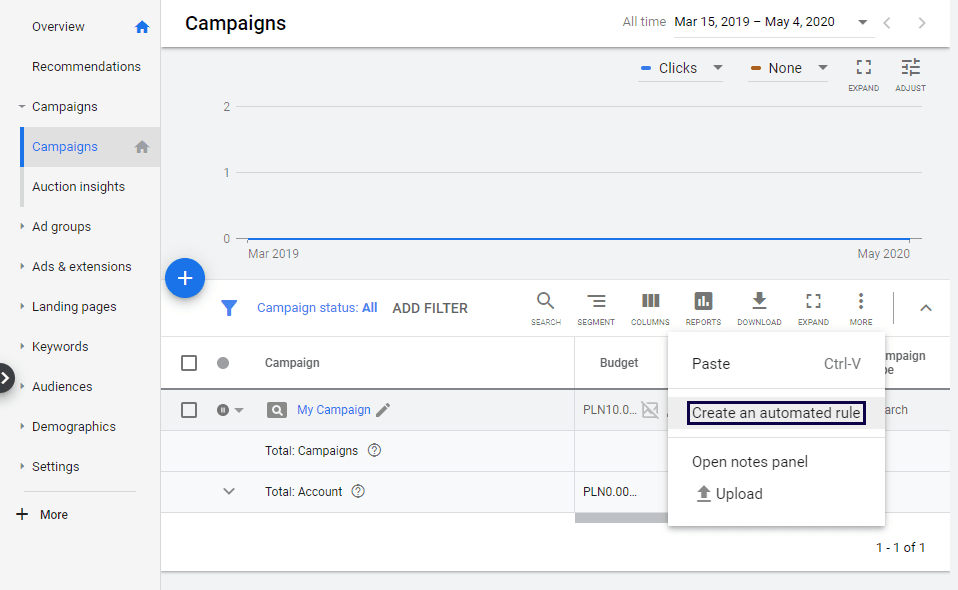



One comment
Thanks for this information. It is really useful to me.